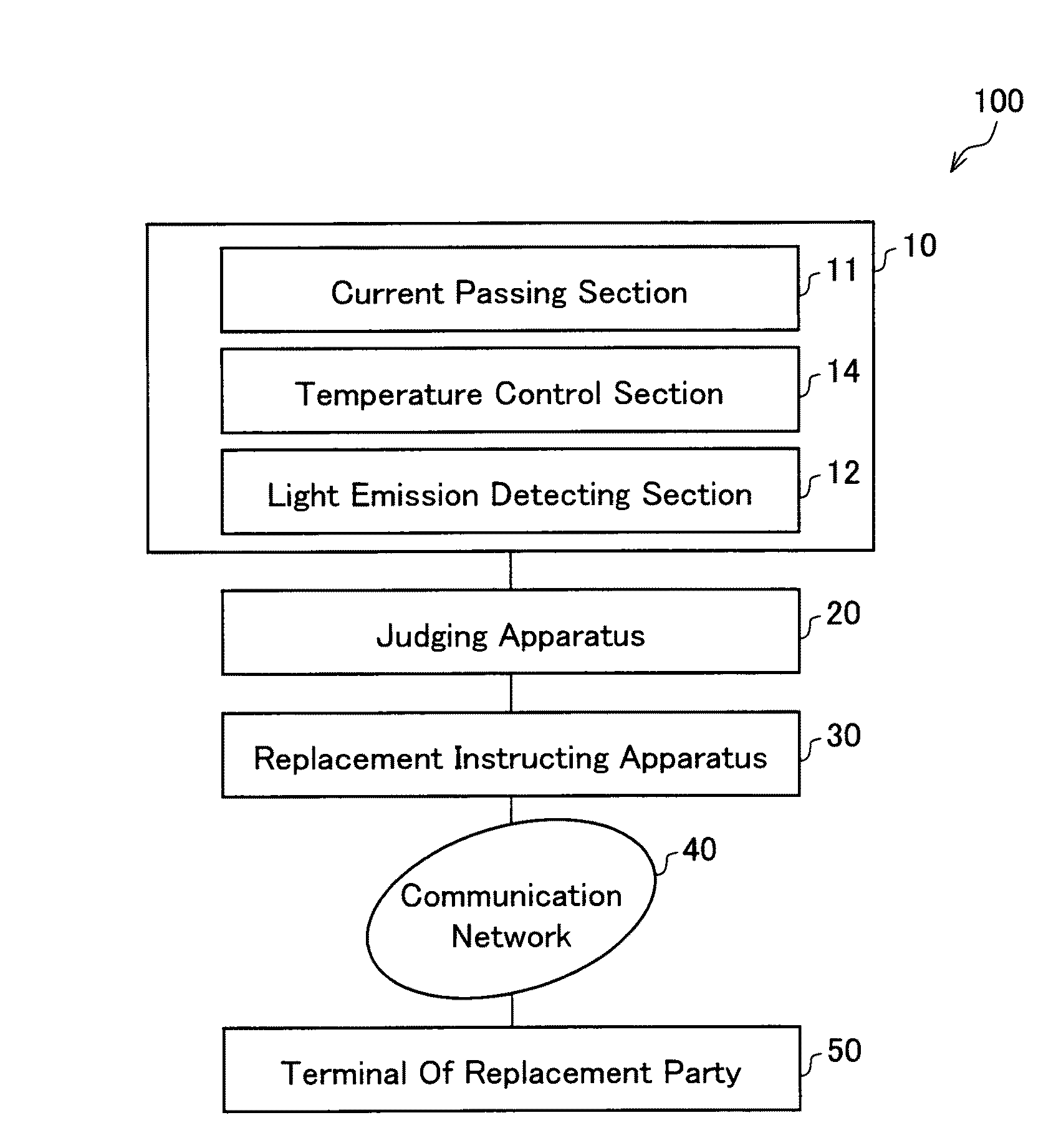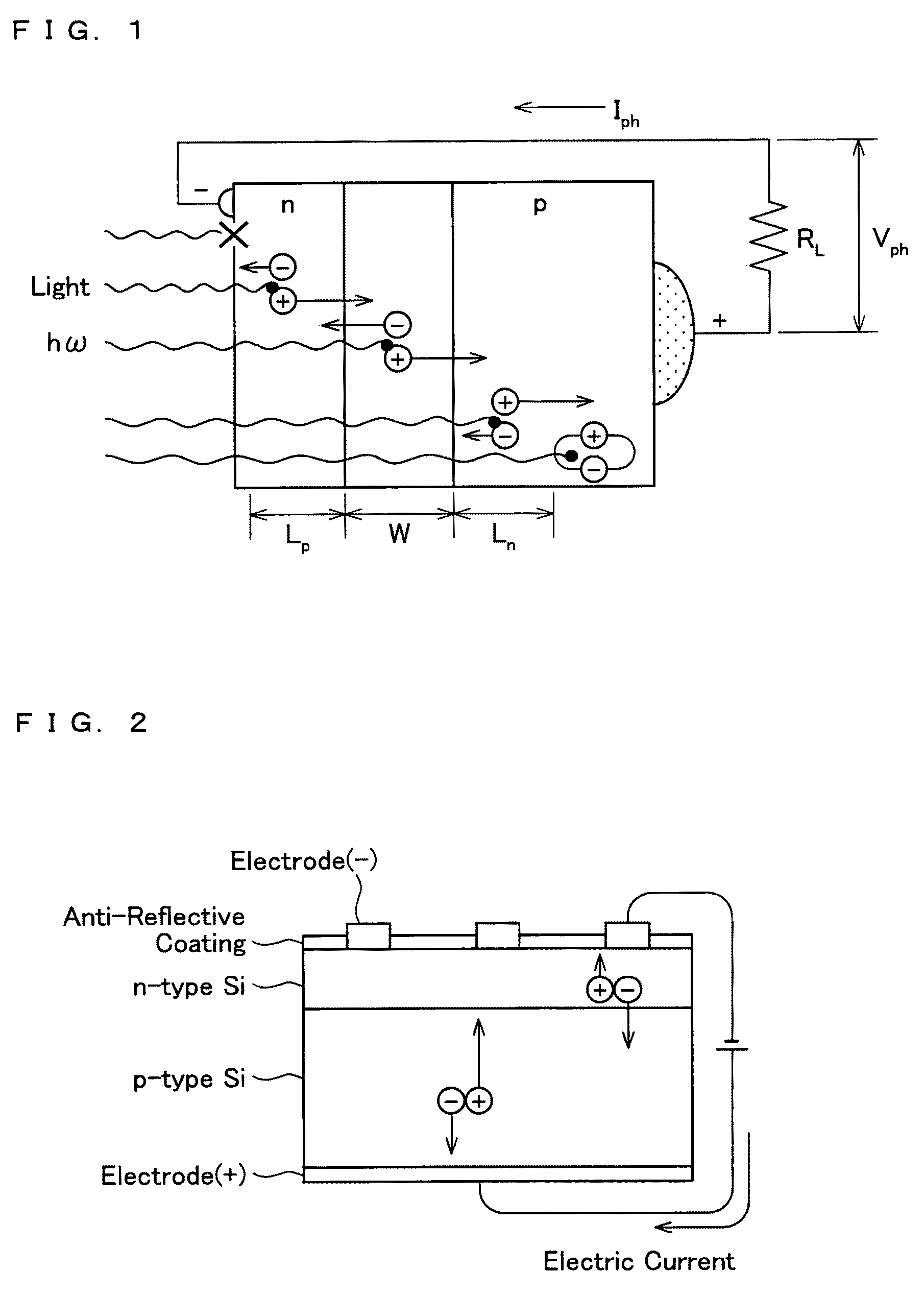Method and apparatus for testing and evaluating performance of a solar cell
a solar cell and performance technology, applied in the direction of individual semiconductor device testing, optical radiation measurement, instruments, etc., can solve the problems of affecting the photoelectric conversion efficiency the impact of the solar cell module's photoelectric conversion efficiency is bad, and the spread of silicon crystal solar cells is interrupted. , to achieve the effect of high purity, high cost and high cos
- Summary
- Abstract
- Description
- Claims
- Application Information
AI Technical Summary
Benefits of technology
Problems solved by technology
Method used
Image
Examples
example
[0181]An Si solar cell element made from polycrystalline silicon semiconductor was analyzed by passing a forward current in a range of 5 to 40 mA / cm2. In the present Example, an emission microscope (Hamamatsu Photonics K.K. PHEMOS-200) was used. Images picturing the Si solar cell element through which the current was passed are illustrated in FIGS. 7(a) and 7(b). FIG. 7(a) is a view illustrating a light emitting state of an Si solar cell element. FIG. 7(b) is an optical photograph of an electrode shape and the like on the surface. In FIG. 7(a), an electroluminescence (EL) light emission is observed caused by electric flow induced from an electrode. Particle fields and defects which are not observed in a regular optical photograph are clearly seen in the EL light emission image.
[0182]Images taken of a state of the Si solar cell element in a size of 1 cm×1 cm at the time when electric flow is induced are illustrated in FIGS. 8(a) and 8(b). FIG. 8(a) illustrates light emission from the...
PUM
 Login to View More
Login to View More Abstract
Description
Claims
Application Information
 Login to View More
Login to View More - R&D
- Intellectual Property
- Life Sciences
- Materials
- Tech Scout
- Unparalleled Data Quality
- Higher Quality Content
- 60% Fewer Hallucinations
Browse by: Latest US Patents, China's latest patents, Technical Efficacy Thesaurus, Application Domain, Technology Topic, Popular Technical Reports.
© 2025 PatSnap. All rights reserved.Legal|Privacy policy|Modern Slavery Act Transparency Statement|Sitemap|About US| Contact US: help@patsnap.com



